A large part of the Arktikum (Rovaniemi's Lapland Museum and Arctic Science center that I talked about in yesterday's journal) was devoted to illustrating how people have lived and continue to live in this northern climate, and the issues they face.
Unfortunately, photography was not allowed in the main cultural part of the museum, but I will try to give you some highlights.
The Sami
The Sami are the indigenous people of Lapland, and theirs is a life in transition. Reindeer husbandry originated in the 13th century, and by the end of the 17th century almost all Sami people owned reindeer. However, as the price of reindeer meat dropped and the cost of living increased, relying on reindeer herding for primary income is becoming harder. Now herding cooperatives help to spread the work.
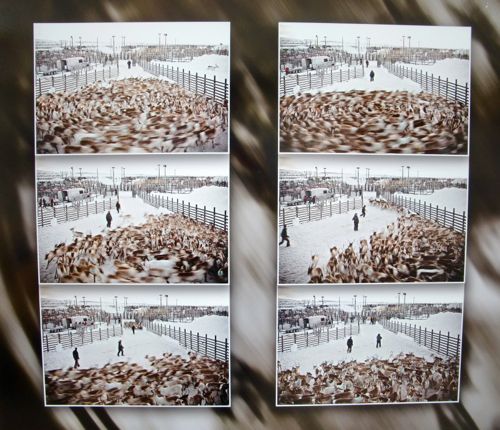
The Sami used to be nomadic people, moving seasonally with their herds to the best foraging places.
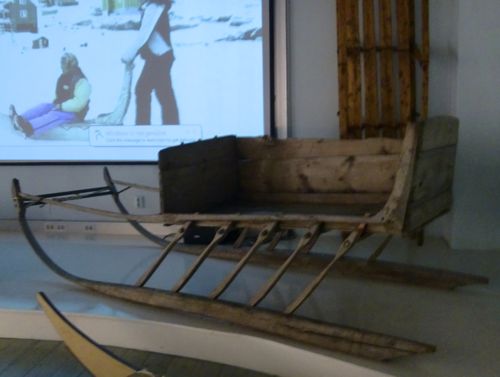
Reindeer are not the only source of protein and income for the Sami in the past or in the present. They have always been a fishing people.
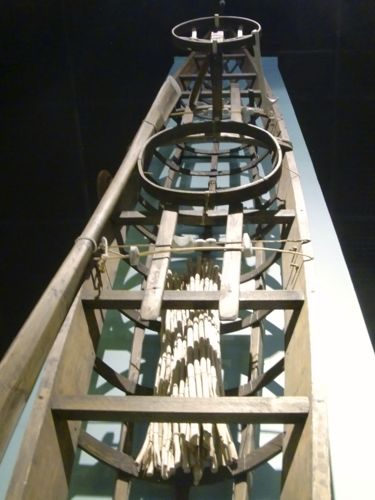
Lapland encompasses the northernmost parts of four different countries: Finland, Norway, Sweden, and Russia (up to the White Sea in the east).
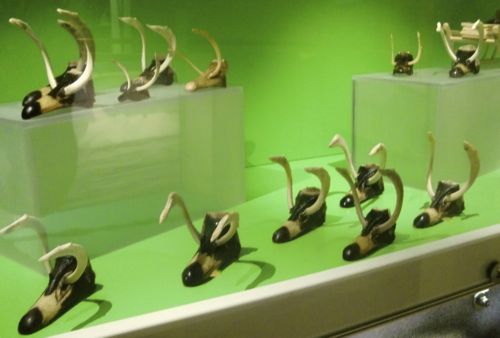
The Future of the Arctic and Arctic Peoples:
The following were listed as threats to natural diversity in the Arctic:
Climate ChangeA statistically significant variation in either the mean state of the climate or the mean variability of the climate that persists for an extended period (typically 10 years or more). Climate change may result from such factors as changes in solar activity, long-period changes in the Earth's orbital elements, natural internal processes of the climate system, or anthropogenic forcing (for example, increasing atmospheric concentrations of carbon dioxide and other greenhouse gases).
Disappearing Habitats: due to the oil and gas industry, hydroelectric dams, forestry and fishing
Pollution: mining and refinery emissions (particularly from Russia) are an issue in this part of the Arctic. Persistent organic pollutants, POPs, are still a concern.
Invasive Species: for example, the Russians introduced king crab to the Barents Sea in 1960. These crabs eat fish eggs and larvae, and have harmed native fish stocks.
Overfishing and Overhunting
However, several exhibits discussed sustainable development in the Arctic:
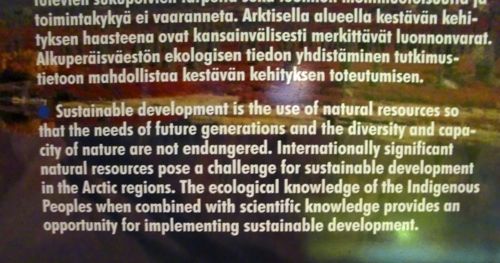
The Arctic is International
In Alaska I tend to be focused on the Alaskan Arctic, and natural resources as they relate to Alaska and the people of Alaska. However, I walked away from the Arktikum with a renewed International perspective of the Arctic and of Arctic issues.
Indeed, I was reminded that the Arctic Council, a forum that addresses Arctic issues, has representatives from eight countries and six indigenous peoples organizations.
The Arctic countries are: Canada, Denmark (for Greenland), Finland, Iceland, Norway, Russia, Sweden, and the USA.
The Arctic Indigenous Peoples Organizations are: the Aleut International Association, the Gwich'in Council International, the Arctic Athabaskan Council, the Inuit CircumpolarLocated or found within the Earth’s polar regions. Conference, the Sami Council, and the Russian Association of Indigenous Peoples of the North.
The Arctic – it connects all of us.


Comments